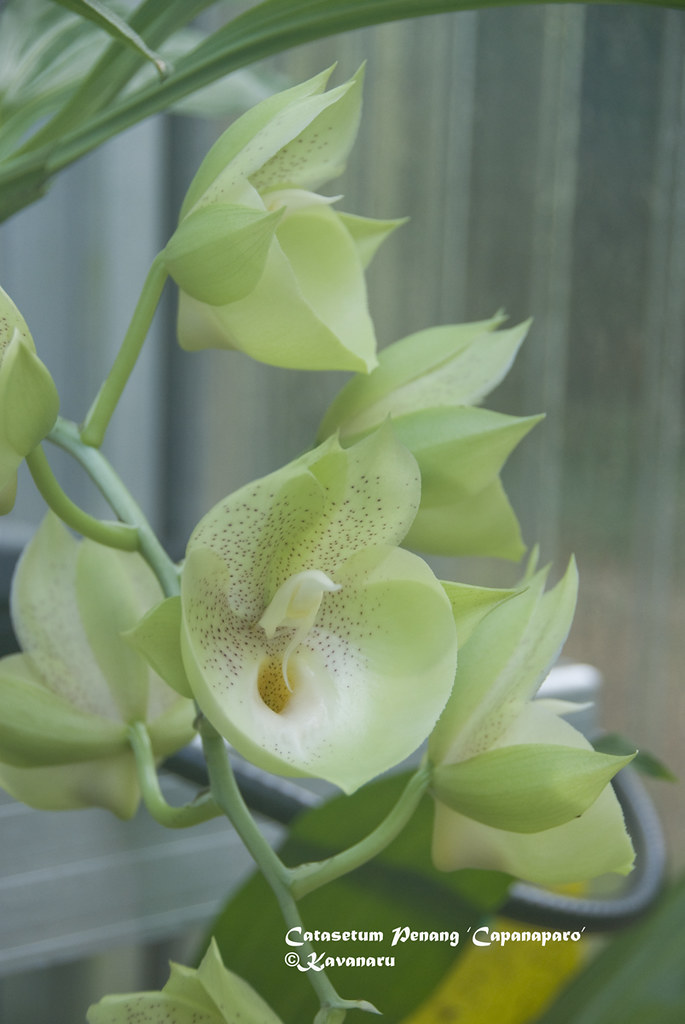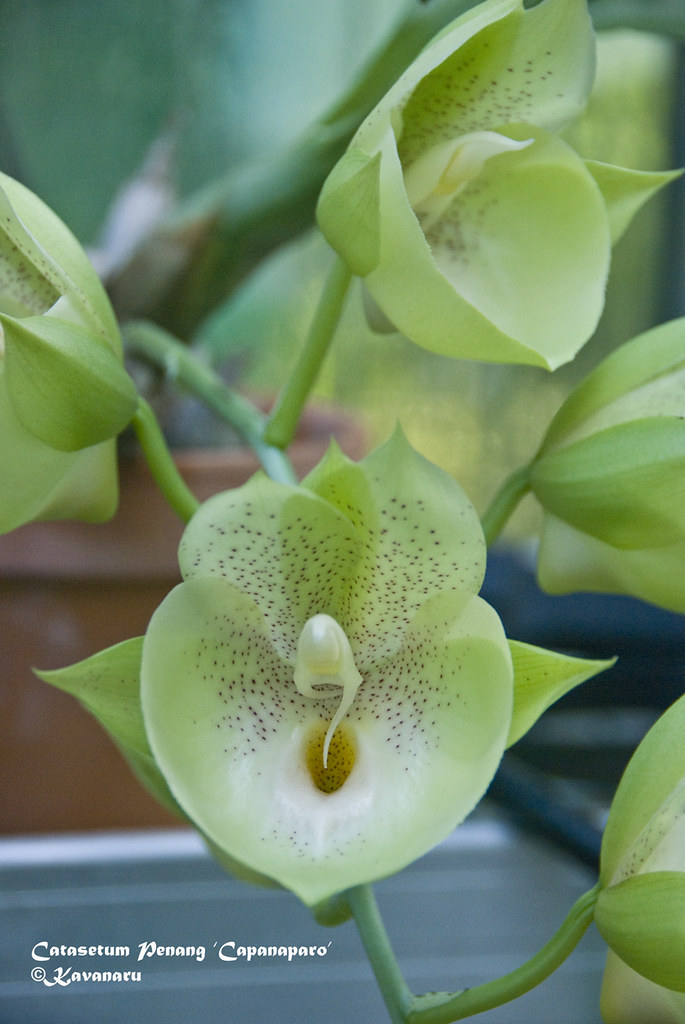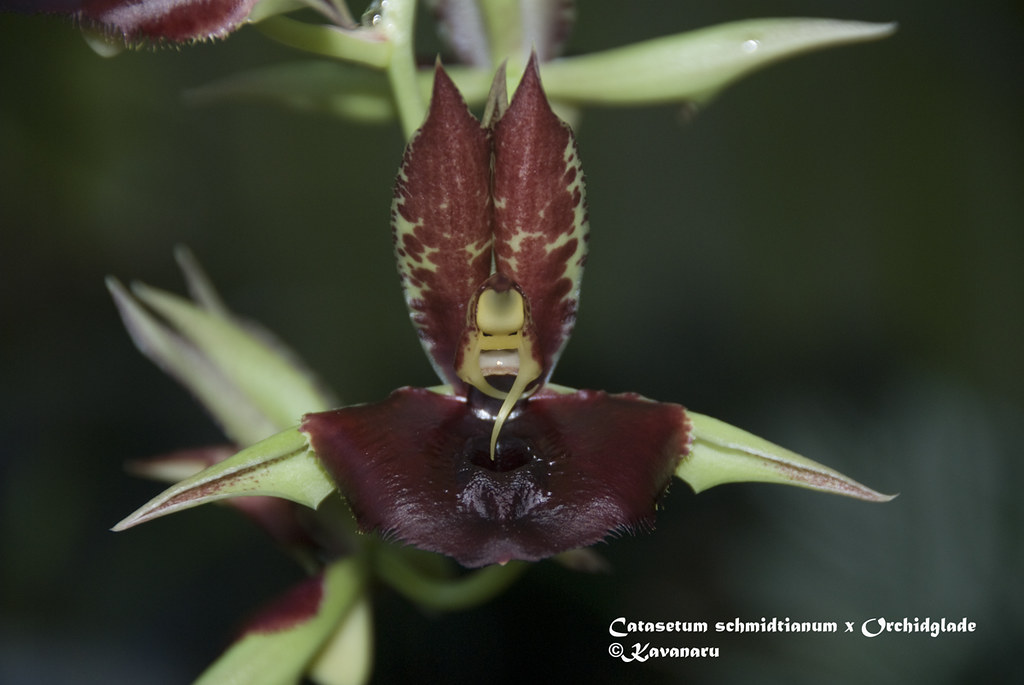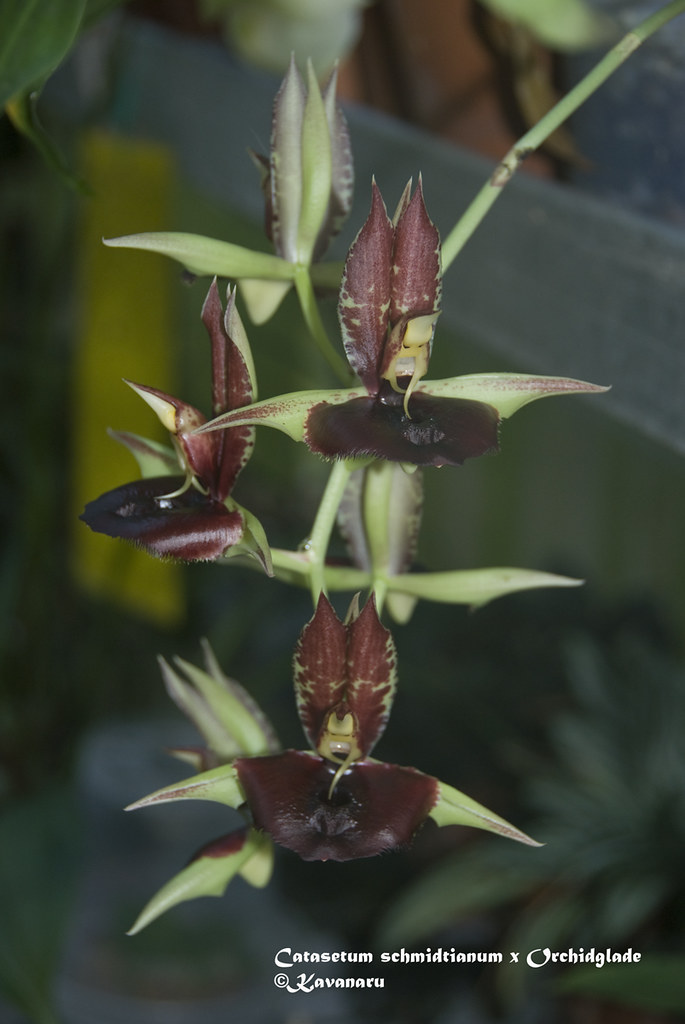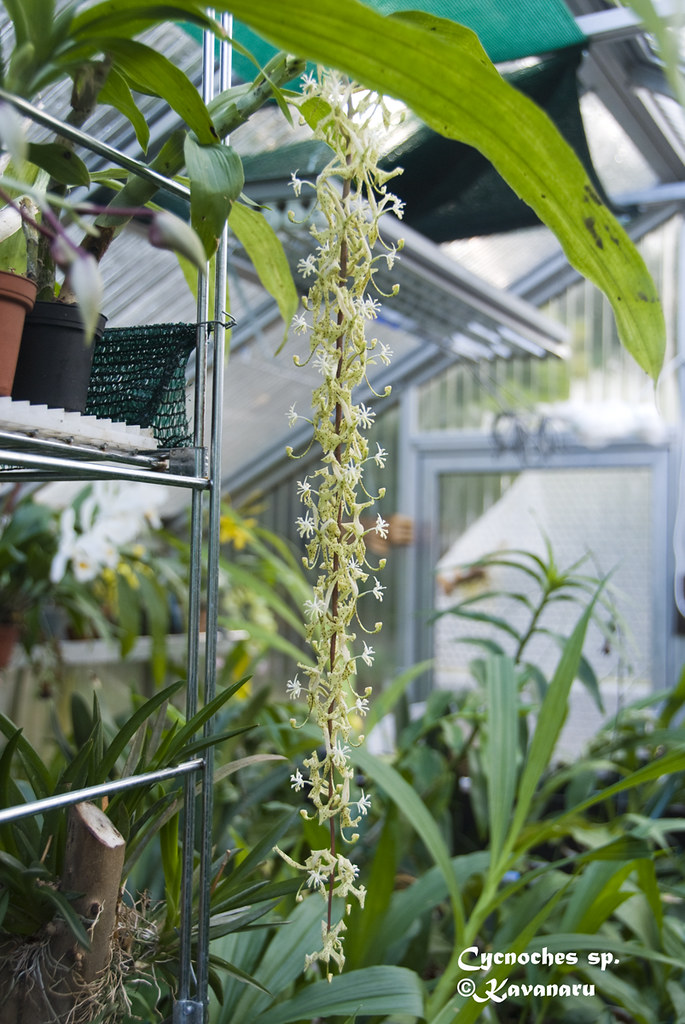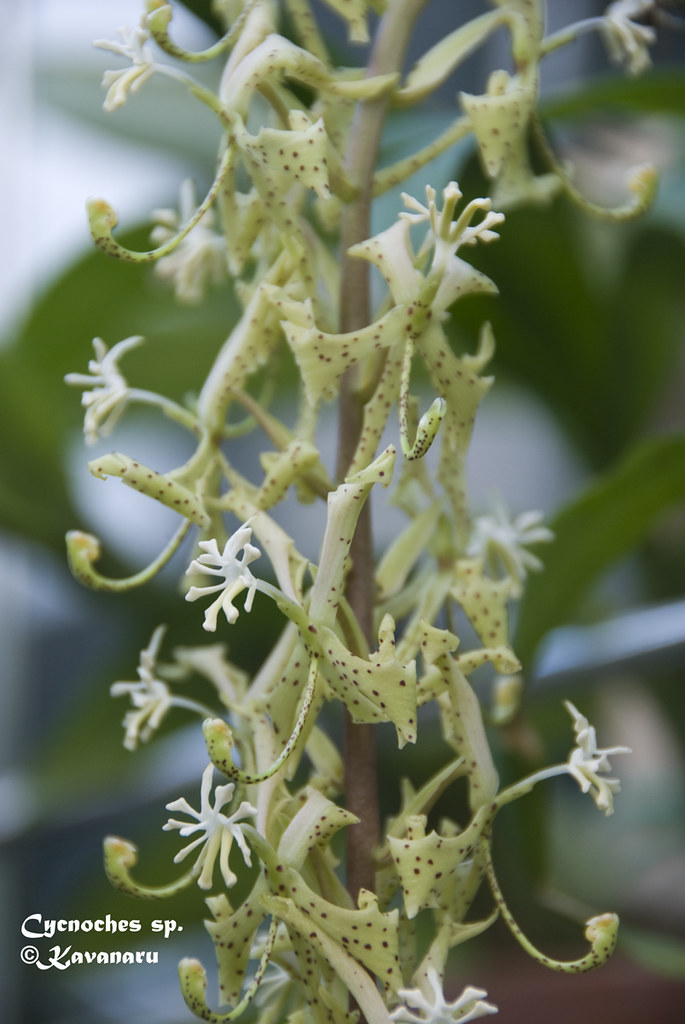I need to disagree with you on this point. Indeed, the most common Ctsm. Penang are "red" as tehy were originally made with pileatum var imperiale, and probably using as well red spotted Ctsm expansum. However, both species involved in this cross are extremely variable, and also the most common pileatum are actually pure white**, and the most common expansum are actually light green with some yellow. Therefore, as well as teh two species involved, Ctsm. Penang, as well as Ctsm Orchidglade and Ctsm Susan Fuchs can be anything from pure white to completely red, with any variation on reds, yellows and greens in between.
I am afraid that you are right for that one...
If they redid the cross with the white pileatum, definitely it would give this flower... Orchidglade JOD actually gives some nearly white progeny when selfed. so 2 generations later, it can give that definitely.
There is a part of the pileatum Imperial 'Pierre Couret' that I could well be the last one to know too... Maurice Lecoufle gave me the story one evening in another life, long time ago...
The first 'imperial' type to have been found were imported to the USA in the 60's. One got an award eventually as 'Ruby', and there were several at Rod McLellan that were documented. They were long time gone.
Pierre Couret brought back not only one plant, but a couple dozen plants. He passed those to Maurice Lecoufle to see which ones could have a potential for propagation and breeding. There were several spotted/flushed plants, and one dark red one. However, the dark red got a rot in the rhizome, and only the top half of the new bulb was alive. So they decided to clone it immediately, using the protocol for Cymbidium. They got a first batch, that they bloomed and released, 100-200 plants. I did that in the 90's again, and indeed catasetum is very easy to clone using even a Vacin and went with soja peptone ( Don Wimber's favorite media...).
They did not make a huge batch, because though Vacherot and Lecoufle were instrumental in getting tissue culture in the orchid world ( through Walter Bertsch, paying Morel a rent to make the technology commercially viable, and more, that's another very long story), they were stupid enough not to see the potential for the mass market, and tried to keep the prices way up. They were using tissue culture to propagate elite plants, and make small series of 50-200+ for the deluxe market.
One guy one time came to see them in the 70's and offered them to join venture, to make a lot and a lot of pot plant. they declined the offer, deemed foolish to make cheap plants. This man was Jan Post, the owner of Floricultura :clap: who did not do so bad business afterwards, but he lost time in research, and they lost a massive potential. Anyway....
When they woke up and started to use their technology for pot plant, it was really too late, the markets were taken pretty much everywhere.
The funny thing too, they made one time the tissue culture of the Pierre Couret, then never again, until exhaustion of their stocks, even if the market was demanding those plants. I don't think they still have any of those original plants of Pierre Couret today.
As an aside note, some were virused with ORSV, as they were grown in another nursery with thousands of cymbidium, and apparently the workers screwed up somewhere. Most were clean however.
Their cousin, Marcel Lecoufle, made even better. One funny hybrid, Paphiopedilum Pinnochio, he made many seed capsules, and sold them for cheap to the Netherlands, as it was 'not interesting'. I know he lost fortunes with that, as shortly afterwards Pinnochio became a best seller... A couple of decades earlier, he did even better, a lot of stupid African Violets hybrids, he just sold the whole bench after a while. Most of the saintpaulia in the trade today can be traced back to his plants and hybrids... :rollhappy::rollhappy::rollhappy:
So back to the pileatum imperial, it has always been rumored that it was a kind of xTapiriceps, but then Pierre Couret and others involved said it was a colony of deep red pileatum. It was not, and the other plants were discarded, as Vacherot and Lecoufle were very strict, and kept only high standard plant in those days.
There has never ever been any division released therefore, only clone of imperial Pierre Couret, from the beginning.
It is funny to know too that some Pierre Couret plants ended up at Jones and Scully too, they were partners for a long time with Vacherot and Lecoufle.
Later in the 80's a funny guy, Michael Ooi spent a lot of time at Vacherot and Lecoufle, he bought plants, he sold plants. Amongst them, the Pierre Couret, so the first Catasetum Penang were for sure made with the Pierre Couret.
**(this is not var. alba, as usually sold, but the tipo of the species - it is pretty hard to find colored or spotted pileatum in nature! - it is also misconception, introduced by teh taiwanes sellers with mislabelled plants, that the normal pileatum is spotted. Most spotted pileatum sold or found in Europe, USA and Asia are actually anything in the "complex" hybrids expansumxpileatum: bold spots are not be found in pileatum!)
That's why I had a doubt when I saw the picture, because this kind of hybrids of pileatum usually in Europe come from Jumbo Orchids and another Taiwanese nurseries, who usually use few plants ( Orchidglade Jack of Diamonds and its mutation, etc...), and Penang should have been red then... especially since the Taiwanese now tend to breed at the tetraploid level, which lessens the chances of getting back recessive traits...
The plant shown here is a cross of Ctsm. pileatum 'Oro Verde' (which, as an interesting note: when cross with other pileatums normally do not transmit the strong green/yellow colors to teh progeny) and Ctsm. Susan Fuchs 'Pintada' (a light colored form of Ctsm. Susan Fuchs with some red spots on the lip, but not too many). The cross was made by a friend of mine in Brazil.
Actually I have seen several Oro Verde, never knew which one is the correct one... It has been awarded a really long time ago and several plants are sold under that name today by the way... Would be really curious to know which one was the real original one ( should be a green and yellow/golden flower, but even so there are several in the trade). pileatum is one of the few species I like in catasetum ( expansum is another one...)

